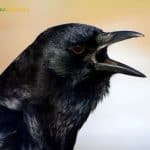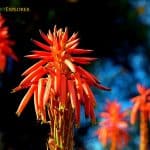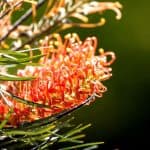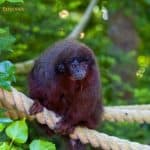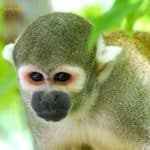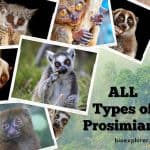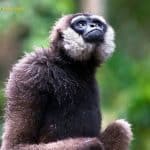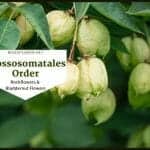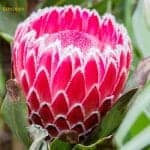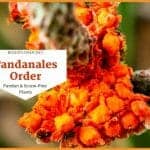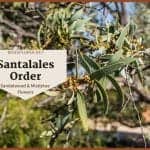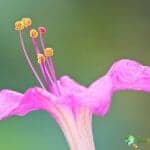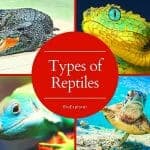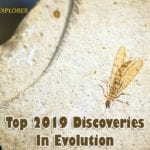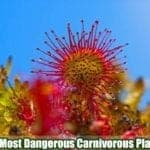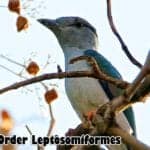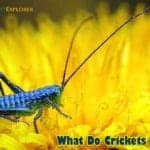Species of birds - search results
If you're not happy with the results, please do another search
Brandt’s Cormorant
Brandt’s Cormorant is a large, black seabird found along the Pacific coast from Alaska to Baja California. It is recognized by its thick neck, long body, and, during breeding season, a striking cobalt-blue throat patch and wispy white facial plumes. These dark-feathered birds nest in colonies on rocky islands and coastal cliffs, often building large nests from seaweed and debris. Brandt’s Cormorants are excellent divers, capable of reaching depths over 200 feet to catch fish such as anchovies and herring. These black birds often forage in groups, working together to herd schools of fish for easier hunting.
American Crow
The American Crow is a large, glossy black bird recognized by its distinctive “caw” and confident walk. Common throughout North America, it thrives in a variety of habitats including forests, fields, towns, and cities. These birds are highly social, often living in family groups and gathering in large communal roosts during winter. American Crows are omnivorous and opportunistic, eating insects, seeds, small animals, carrion, and human food scraps. Notably intelligent, they are skilled problem solvers and quick learners. American Crows are curious, cooperative breeders, and adapt well to both urban and rural environments.
Rook
The Rook is a large, sociable black bird native to Europe and Asia, easily recognized by its bare, pale-grey face and cone-shaped head. It forms noisy colonies called rookeries, nesting high in tall trees near farmland, villages, or parks. Rooks forage in flocks, probing fields for grubs, worms, seeds, and grain, but also eat insects, small mammals, and carrion. Highly intelligent, they use tools and have excellent memories. Unlike crows, adult rooks show a whitish patch at the bill’s base. Some rookeries have been used for over a century.
Eurasian Jackdaw
The Eurasian Jackdaw is a small, social member of the crow family, instantly recognized by its charcoal-black plumage, silvery-gray nape, and striking pale eyes. Native to Europe, western Asia, and North Africa, it thrives in a variety of habitats, from woodlands and farmland to cities and coastal cliffs. Jackdaws are highly gregarious, often seen in flocks performing acrobatic flights or gathering at communal roosts. They nest in cavities, chimneys, or cliffs and are known for their intelligence and curiosity, sometimes collecting shiny objects. Their varied diet includes insects, seeds, fruit, carrion, and even human refuse.
Common Raven
The Common Raven is one of the largest and most widespread black songbirds, easily recognized by its all-black plumage, thick neck, shaggy throat feathers, and wedge-shaped tail. Found across the Northern Hemisphere, it thrives in diverse habitats-from forests and mountains to deserts and coastlines, and even near human settlements. Ravens are highly intelligent, known for problem-solving, tool use, and playful behaviors like aerial acrobatics and object games. They are omnivorous, eating everything from carrion and small animals to grains and human food scraps. Ravens can mimic sounds, including human speech, and often cache food for later use.
Top 27 Biology-themed Movies
Biology, in the simplest terms, is defined as the study of living organisms. The top 27 biology movies showcase biological concepts and other related scientific fields. Now, who says that you cannot learn while having fun simultaneously?
Krantz Aloe
Aloe arboresens is a perennial succulent of the order Asparagales. It can grow to a height of 2-3 meters. The bitter juice of the Aloe arborescens has medicinal uses. For example, the burn victims of WWII were treated with the concoctions of Aloe.
Carnivorous Monkeys
Carnivorous monkeys strictly dine on animal matters, including birds, insects, other monkey species, and small mammals. Explore all carnivore monkeys here.
Satéré Marmoset
The Satéré marmoset (Mico saterei) is native to Brazil and its genus is characterized by claw-like nails rather than the flat nails of other primates, long lower incisors, a specialized caecum, and squirrel-like movements in trees.
Spix’s White-fronted Capuchin
Spix's White-fronted Capuchin (Cebus unicolor) is a species of a gracile capuchin monkey. The species is widespread in the upper Amazon basin in Peru and Brazil. It is also present in northern Bolivia. According to the genetic studies by Boubli et al., Ryland and Mittermeier elevated it to a distinct species.
Bearded Saki
The bearded sakis or cuxiús are five species of New World monkeys classified in the genus Chiropotes. Bearded saki shows slight sexual dimorphism: males are usually taller and have longer, more prominent beards than females.
Illiger’s Saddle-Back Tamarin
(Leontocebus illigeri) is a species of saddleback tamarin, a type of small monkey native to South America. Illiger's saddleback tamarin is native to the Peruvian Amazon, and its type locality is in Loreto, Peru, on the left bank of the lower Ucayali River.
Cruz Lima’s Saddleback Tamarin
The Cruz Lima saddleback tamarin is a species of saddleback tamarin, a small monkey native to South America. The Cruz Lima saddleback tamarins were formerly thought to be a subspecies of the brown-mantled tamarin (Leontocebus fuscicollis).
Baboons
Baboons are another breed of Old-world monkeys classified under the genus Papio. There are 6 types of baboons. Explore all about baboons here.
What Do Goldfinches Eat? Explore Goldfinch Diets, Hunting & Eating Habits
Goldfinches are mainly omnivores. Explore in detail what do Goldfinches eat by their types, hunting techniques, what eats Goldfinches & more.
What Do Orioles Eat? Explore Oriole Diets, Hunting & Eating Habits
Orioles are omnivorous birds grouped in 2 different families. Explore what do orioles eat, orioles diet by types, and what eats orioles here.
Argentinian Monkeys
Five different species spanning 3 genera of New World monkeys can be found in Argentina, though none of them are endemic to the country. These species are generally found in forested regions, mainly in provinces like Santa Fe, Chaco, and Formosa.
Guianan Brown Capuchin
The tufted capuchin (Sapajus apella), also called the pin monkey, Guianan brown capuchin, or black-headed capuchin is a New World monkey native to South America and the Caribbean islands of Margarita and Trinidad.
Mount Finke Grevillea
Grevillea treueriana is a small shrub from order Proteales. The Mount Finke Grevillea plants are endemic to Mount Finke of Australia and can grow to a height of 2 meters. The flowers of the Grevillea treueriana are shaped like a toothbrush.
The Ultimate Guide to 25+ Spectacular Desert Flowers & Their Unique Adaptations
Desert Flowers: Approximately 1/3 of the earth's surface is deserts. Despite having prolonged periods without precipitation, severe temperature ranges, dry winds, and low humidity, the beautiful blooms of the desert have learned to survive the harsh environment and continue to bloom and provide colors to the desert.
Chacma Baboon
Like all other baboons, the Chacma baboon, the Cape baboon, belongs to the Old-World monkey family. Chacma baboons have a habit of flipping over rocks in search of food. So, it's pretty easy to spot where a group of Chacmas once foraged.
Bonnet Macaque
The Bonnet Macaque, also called Zati, is a species of macaque native to southern India. Bonnet macaques get their common name from a unique feature: a hood-like tuft of hair that extends from the top of their head, much like a tuft of dry grass. Their marble-round eyes look out into the world with a very expressive forehead.
Black Lion Tamarin
The black lion tamarin, also called the golden-rumped lion tamarin, is a lion tamarin native to the Brazilian state of Sao Paulo, almost exclusively in Morro do Diabo State Park. Its limited geographic range makes it the rarest of the New-World monkeys.
Bare-eared Squirrel Monkey
The bare-eared squirrel monkey also called the golden-backed squirrel monkey, is a subspecies of the Saimiri sciureus group native to the tropical forests and jungles of South and Central America. The bare-eared squirrel monkey differs from other species because it does not have ear tufts.
Prosimians
Prosimians are a grouping of primates currently made up of the species (both living and extinct) of two main taxonomic categories. Explore all types of prosimians here.
Agile Gibbon
Agile gibbons, also known as dark-handed or black-handed gibbons, are arboreal monkeys; they are always in the trees. Agile gibbons belong to the great ape family. However, they are categorized as lesser apes because they are smaller than great apes.
Order Vitales / Grapes & Boston Ivy Flowers
Members of Vitales have small flowers and simple, pinnate, or palmate leaves. The tendrils and the inflorescences are opposite to the leaves. The grapes, Boston ivy, and Chinese Virginia creeper are the example species of the order Vitales.
Order Oxalidales / Wood Sorrel Flowers
Oxalidales (Wood sorrel) order of flowering plants is annuals, perennial herbs, lianas, shrubs, and trees distributed in temperate and tropical regions. Oxalidales plants have compound leaves, actinomorphic and bisexual flowers, usually 4-5 sepals and petals.
Brassicales / Mustard & Cabbage Flowers
Brassicales is an order of flowering plants comprising trees, herbs, shrubs, or lianas primarily distributed worldwide. Brassicales have glucosinolates or mustard oils, small stipules, often bisexual flowers, inflorescences in racemose, and nectaries found between the petals and the stamens. The known plants of Brassicales are mustard, cabbage, capers, mignonette, and nasturtiums.
Order Crossosomatales / Rockflowers
Crossosomatales is a small order of flowering plants consisting of woody shrubs and trees. It is distributed in various regions across the northern and southern hemispheres. Crossosomatales or the Rockflower order is placed under Rosid eudicots and consists of 7 families and 12 genera.
Protea
Proteas are found throughout the mountain ranges of Australia and South Africa, appearing in all their glory in various regions. Protea is a genus of plants also known as maples. Protea leaves are hard and leathery. The inflorescence of the protea flower can be described as cup-shaped, calyx-shaped, or bowl-shaped.
Order Poales / Grass, Bamboo and Pineapple
Poales species are monocots with two-ranked leaves, much reduced flowers, dry and small stigma, and well-developed style. The Poales flowers are unisexual, bisexual, or sterile and pollination of the members is via anemophily or entomophily. The famous bamboo, pineapple, Yellow-eyed grass, Stream Bogmoss, and Palmiet are found under Poales order.
Order Pandanales / Pandan & Screw-Pine Plants
Panama hat palm or screw-pines order of flowers is called Pandanales, which range from arborescent plants of tropical coastal areas and rainforests to the forest floor’s twining herbs, lianas, and saprophytic herbs. Hala tree, Rainforest Screw Pine, Paca, Purple Vellozia, Creeping vellozia, and Wild Asparagus are examples of Pandanales order flowers.
Order Buxales / Boxwood Flowers
The whole range of boxwood flowers belong to order Buxales. Order Buxales is the eudicot flowering plant consisting of evergreen shrubs or trees. Members of Buxales are usually monoecious with simple, non-sheathing, and estipulate leaves. Balearic box, Korean boxwood, Japanese Pachysandra, and Allegheny spurge are excellent garden flowers from this order.
Order Sapindales / Lychee and Lemon Flowers
Order Sapindales belongs to the dicotyledonous flowering species which are distributed in the tropics and the temperate regions. Most plants of Sapindales are woody with resin ducts in their bark or wood, compound or lobed leaves, and polypetalous flowers. They are polygamous, with most bisexual flowers functionally unisexual. Among the critical species involve cashew, mahogany, lemon, and lychee.
Order Santalales / Sandalwood & Mistletoe Flowers
Santalales is one of the most prominent groups of parasitic flowering plants, with species distributed worldwide. Santalales involve plants that form haustorium to penetrate the host's barks and roots, plants that undergo photosynthesizing activities in the stem, and members with usually simple and exstipulate leaves. Sandalwood and mistletoes are just two of the known plants under Santalales.
Order Escalloniales / Redclaws & Laurel Flowers
Escalloniales is an order of eudicotyledonous flowers placed under the clade of campanulidas. Being predominantly distributed in the southern hemisphere, Escalloniaceae plants possess simple, petiolate, exstipulate leaves, regular flowers mostly in racemose, and pentamerous floral parts. Redclaws, Chachacoma, Native laurel, Polyosmo leratii and white alder are among the beneficial Escalloniacea species.
Order Cornales / Dogwood Flowers
The dogwood order of flowers, Cornales, is basal among asterids. Cornales is relatively small, but members are morphologically diverse and are cosmopolitan in distribution. Cornales plants are mostly woody with simple or compound leaves, small flowers, floral parts in multiples of four, and generally bisexual. Many of the species of Cornales, like the flowering dogwood and Lindley’s blazing star are of ornamental value.
Order Bruniales / Redleg & Spiny Desfontainia Flowers
The Order Bruniales plants typically possess small, persistent, and simple leaves, small to medium-size flowers, mostly 5-merous in the calyx and corolla, and usually clawed petals. The members of Bruniales are hermaphrodites and undergo pollination via insects and hummingbirds. Known example flowering species are redlegs, common cotton bush, Cone stompie and the spiny desfontainia.
Order Berberidopsidales / Coral Plant Flowers
Berberidopsidales is a small order of flowering species under the clade of the core eudicots. The species of Berberidopsidales possess crystals, usually have 5-merous floral parts and usually small flowers. Coral plant and Olivilla flowers are among the only 4 species of Berberidopsidales.
Flowers Starting with I
The joy of gardening is all about adding new flowering species to your garden, as there is always room for one more plant. So to ensure that you keep your garden looking great all year long, spice it up with new flower types - be it colorful perennials or flowering bulbs. Here is the group of flowers starting with the letter I.
Kangaroo Paw
Unlike any other flower, the Kangaroo Paw (Anigozanthos flavidus) has long club-shaped buds covered with thick hairs of a deeper hue than the flowers. The flower can be brown, orange, pink, red, yellow, or green, depending on the species.
Bouvardia
Bouvardia (Bouvardia ternifolia) is a genus of vibrant, tubular flowers native to Mexico, with species like B. ternifolia showcasing brilliant scarlet to coral-red blooms. The flowers grow in small, elegant clusters that attract hummingbirds. Historically, Bouvardia has ties to colonial Mexico, where it was cultivated for ornamental gardens.
Four O’ Clock
Four O'clock will delight both your eyes and your nose, with fragrant tubular flowers that come in a variety of patterns and colors. Often, you even get different colored flowers on the same plant. the flowers are tubular, red, pink, or white, up to 6.5 cm long and 3.5 cm wide with 5 to 6 stamens.
Types of Crocodiles
Crocodilia is one of the reptile orders dedicated to large, lizard-shaped, and predatory reptiles. Explore 23 types of crocodiles by water bodies, regions, and taxonomy classification year.
What Do Reptiles Eat?
There are two types of reptiles based on their diets, namely carnivorous reptiles and herbivorous reptiles. Explore what do reptiles eat here.
4 Different Types of Reptiles
Reptiles are cold-blooded vertebrates of the class Reptilia. Explore the top 8 reptile characteristics and four different types of reptiles here.
Top 10 Genetics News of 2020
Genetics in 2020 also came to the forefront of science because tracing the virus variants was crucial. Here are the top 10 genetics news of 2020 reviewed.
Top 10 Evolutionary Biology News of 2020
Despite the isolation enforced by the pandemic, research in evolutionary biology thrived in 2020. Here are the top 10 evolutionary biology news of 2020.
Top 10 Ecology News of 2020
BioExplorer team presents the newest 2020 discoveries that showcase what is becoming of the ecosystems on our planet. Find top 10 ecology news of 2020.
Top 10 Botany News in 2020
If we look at the current discoveries in Botany, it is clear that Plant Science is actually thriving now. Here are top 10 botany news in 2020.
Top 16 Animals with the Best Hearing
The ability to hear has been evolving in animals for a considerable time. Explore 16 animals with the best hearing (Vertibrates & Invertibrates).
Top 10 Discoveries in Ecology 2019
Due to climate change and destructive human activity, news in the ecology area in 2019 is quite contrary. Here are the top 10 discoveries in ecology 2019.
Top 10 BEST Genetics Discoveries of 2019
Genetics is a science that studies the most well-kept secrets of life. Here are the top exciting 10 Genetics Discoveries of 2019.
Top 10 Best Universities For Veterinary Medicine
Few professions are both gratifying and highly competitive, and veterinary medicine is one of them. Find the top 10 best colleges for veterinary medicine.
Top 2019 Discoveries in Evolution
The 2019 discoveries in evolution show that the new approaches to traditional research areas such as paleobiology and the use of modern technology can offer unique, previously unimaginable insights.
25 Most Famous & Dangerous Bug Eating Plants
Carnivorous plants derive most of their nutrients by consuming animals. Know more about them as this article features the 25 most famous carnivorous plants.
Order Leptosomiformes / Cuckoo Roller
The bird Order Leptosomiformes contains only one species – cuckoo roller. Explore its habitats, diet and special features that made them into its own order.
Order Gruiformes / Cranes & Rails
Gruiformes order contains a wide variety of birds, both in size and other features. Explore order Gruiformes, families, habitats, diets and characteristics.
What Do Crickets Eat? Explore Cricket Diets, Hunting & Eating Habits
Crickets are insects with long antennae that extend beyond the length of their bodies. Explore what do crickets eat and their diet by types.



